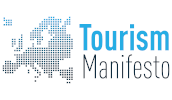FEG ExCo Deputy & FEG Trainer
4 Principles for Accessible Websites.... .. ... ... .. .. ...
Accessibility is a human right. In a world where 15%, or one billion people, of the global population live with some form of disability, it is essential to realise and address the magnitude of the problem1.
Legislation around the world protects individuals against discrimination and unfair treatment. It protects against discrimination in the workplace; when providing goods, facilities and services; at public functions and premises; in education. It also extends to websites and mobile applications. It is expected the digital presences such as websites and apps, should be accessible and used by as many people as possible.

Image: People checking website, Digital Accessibility via Canva.com
Tourist guides are committed to offering services that meet the needs and abilities of all their clients. Accessible Tourism is a long-term goal for the European Federation of Tourist Guide Associations (FEG). This goal is promoted and achieved through partnerships and training courses.
But what about digital services? What criteria can be used to check whether websites and other digital offerings are accessible to all?
Here the Web Content Accessibility Guidelines2 is a friend. The Accessibility Guidelines provide four main principles to help with accessibility. The principles are:
- Perceivable: Website users should be able to understand web content using senses such as sight, sound, touch. For example, have you provided captions for any audio content included in your website?
- Operable: Website users should be able to interact and navigate a website when using adaptive devices such as voice recognition and screen readers. For example, are you using ALT Text in every one of the pictures on your website3? Have you checked that all your links to other pages work?
- Understandable: As many people as possible should be able to interact and understand the website content. Are you using Easy to Understand Language (ETUL) when describing your content and services?
- Robust: Web content should work well across browsers and platforms. This should include the use of assistive technologies such as text-to-speech and word prediction. For example, have you tried to open your website using different browsers? Does it work the same in every different one?
Using these 4 Principles is good practice whether you are a self-employed tourist guide considering creating your first website, or a tourist guides’ association representing its membership.
What other things should you keep in mind when you want your personal or association website to be accessible to all?
- In implementing these principles it is important that everyone involved in the digital project is included. This is especially important for association websites where more than one person is involved in the project. Otherwise, there is a risk of people accidentally making things inaccessible.
- The importance of user research cannot be overstated. Never be afraid to ask disabled people and groups for their feedback and help. Take their advice. Only they know what is best for them.
- Try to understand what accessibility means for different people and don’t forget that often there are more than one access problem per individual.
- Don’t forget accessible websites are preferred and promoted by search engines. It is to your benefit to have an accessible website.
It is important to think of accessibility from the start when designing new digital services or redesigning existing ones. It is important because it will cost less if it is considered right at the start. It will also make sure that everybody is included. Finally, don’t forget that FEG is committed to Accessible Tourism in all its forms and offers training courses to its member-associations’ certified tourist guides.
You can click on the full Cultural Routes listing per European country and see which are the themed Routes in your own area here:
Sources
1 World Health Organization: World Report on Disability
https://www.who.int/publications/i/item/9789241564182
2 Web Content Accessibility Guidelines
https://www.w3.org/WAI/WCAG21/quickref/?showtechniques=141%2C221%2C231%2C311#principle4










